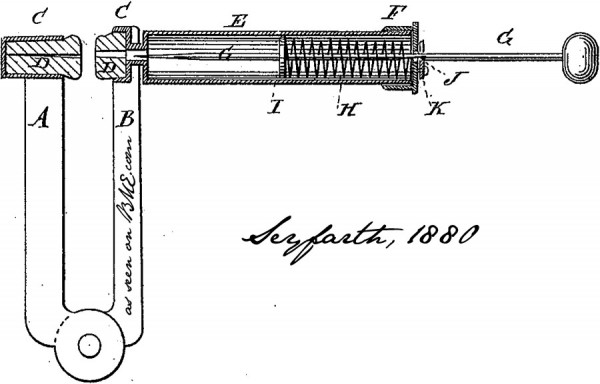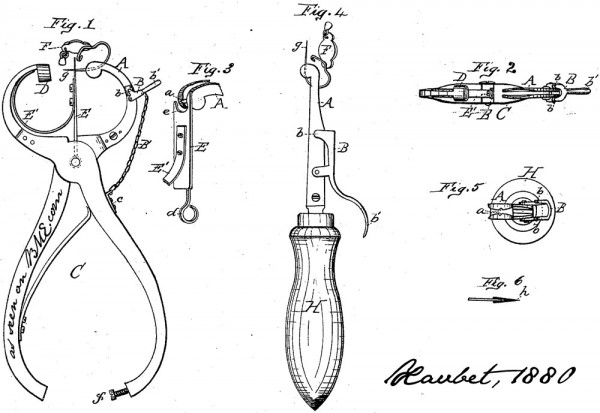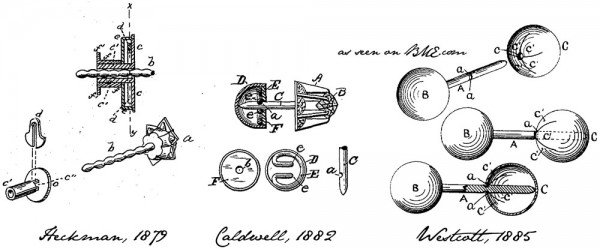[ | E-mail |
Contact: Phil Sneiderman
prs@jhu.edu
443-287-9960
Johns Hopkins University
According to a Johns Hopkins earth scientist, the hole in the Antarctic ozone layer has caused changes in the way that waters in those southern oceans mix a situation that has the potential to alter the amount of CO2 in the atmosphere and eventually could have an impact on global climate change.
In a paper published in this week's issue of the journal Science, Darryn W. Waugh and his team show that subtropical intermediate waters in the southern oceans have become "younger" as the upwelling, circumpolar waters have gotten "older" changes that are consistent with the fact that surface winds have strengthened as the ozone layer has thinned.
"This may sound entirely academic, but believe me, it's not," said Waugh, of the Morton K. Blaustein Department of Earth and Planetary Sciences at Johns Hopkins' Krieger School of Arts and Sciences. "This matters because the southern oceans play an important role in the uptake of heat and carbon dioxide, so any changes in southern ocean circulation have the potential to change the global climate."
Waugh's team used measurements taken from the early 1990s to the mid-to-late 2000s of the amount of a chemical compound known as "chlorofluorocarbon-12," or CFC-12, in the southern oceans. CFC-12 was first produced commercially in the 1930s and its concentration in the atmosphere increased rapidly until the 1990s when it was phased out by the Montreal Protocol on substances that deplete the ozone layer. (Prior to the Montreal Protocol, CFC-12 was used in products such as aerosol hairsprays and refrigerants and in air conditioning systems.)
From those ocean measurements, Waugh's team was able to infer changes in how rapidly surface waters have mixed into the depths of the southern oceans. Because they knew that concentrations of CFCs at the ocean surface increased in tandem with those in the atmosphere, they were able to surmise that the higher the concentration of CFC-12 deeper in the ocean, the more recently those waters were at the surface.
The inferred age changes "younger in the subtropics, "older" nearer the South Pole -- are consistent with the observed intensification of surface westerly winds, which have occurred primarily because of the Antarctic ozone hole, suggesting that stratospheric ozone depletion is the primary cause of the changes in ocean ventilation. As stratospheric ozone recovers over the next 50 years, the changes in ventilation may slow or reverse. The impact of continued increases in greenhouse gases in the atmosphere will also need to be considered, however. The combined impact of the two factors on the southern oceans' ventilation and uptake of heat and carbon is an open question.
###
Also on the research team were collaborators Francois Primeau of the University of California, Irvine; Tim Devries of the University of California, Los Angeles; and Mark Holzer of the University of New South Wales and Columbia University. Funding for the study was provided by the National Science Foundation and the Australian Research Council.
Related link:
Darryn Waugh's Website: http://www.jhu.edu/~dwaugh1/
MEDIA CONTACT: Amy Lunday
(443) 287-9960 (office)
(410) 804-2551 (cell)
acl@jhu.edu
Phil Sneiderman
(443) 287-9960 (office)
(410) 299-7462 (cell)
prs@jhu.edu
?
AAAS and EurekAlert! are not responsible for the accuracy of news releases posted to EurekAlert! by contributing institutions or for the use of any information through the EurekAlert! system.
[ | E-mail |
Contact: Phil Sneiderman
prs@jhu.edu
443-287-9960
Johns Hopkins University
According to a Johns Hopkins earth scientist, the hole in the Antarctic ozone layer has caused changes in the way that waters in those southern oceans mix a situation that has the potential to alter the amount of CO2 in the atmosphere and eventually could have an impact on global climate change.
In a paper published in this week's issue of the journal Science, Darryn W. Waugh and his team show that subtropical intermediate waters in the southern oceans have become "younger" as the upwelling, circumpolar waters have gotten "older" changes that are consistent with the fact that surface winds have strengthened as the ozone layer has thinned.
"This may sound entirely academic, but believe me, it's not," said Waugh, of the Morton K. Blaustein Department of Earth and Planetary Sciences at Johns Hopkins' Krieger School of Arts and Sciences. "This matters because the southern oceans play an important role in the uptake of heat and carbon dioxide, so any changes in southern ocean circulation have the potential to change the global climate."
Waugh's team used measurements taken from the early 1990s to the mid-to-late 2000s of the amount of a chemical compound known as "chlorofluorocarbon-12," or CFC-12, in the southern oceans. CFC-12 was first produced commercially in the 1930s and its concentration in the atmosphere increased rapidly until the 1990s when it was phased out by the Montreal Protocol on substances that deplete the ozone layer. (Prior to the Montreal Protocol, CFC-12 was used in products such as aerosol hairsprays and refrigerants and in air conditioning systems.)
From those ocean measurements, Waugh's team was able to infer changes in how rapidly surface waters have mixed into the depths of the southern oceans. Because they knew that concentrations of CFCs at the ocean surface increased in tandem with those in the atmosphere, they were able to surmise that the higher the concentration of CFC-12 deeper in the ocean, the more recently those waters were at the surface.
The inferred age changes "younger in the subtropics, "older" nearer the South Pole -- are consistent with the observed intensification of surface westerly winds, which have occurred primarily because of the Antarctic ozone hole, suggesting that stratospheric ozone depletion is the primary cause of the changes in ocean ventilation. As stratospheric ozone recovers over the next 50 years, the changes in ventilation may slow or reverse. The impact of continued increases in greenhouse gases in the atmosphere will also need to be considered, however. The combined impact of the two factors on the southern oceans' ventilation and uptake of heat and carbon is an open question.
###
Also on the research team were collaborators Francois Primeau of the University of California, Irvine; Tim Devries of the University of California, Los Angeles; and Mark Holzer of the University of New South Wales and Columbia University. Funding for the study was provided by the National Science Foundation and the Australian Research Council.
Related link:
Darryn Waugh's Website: http://www.jhu.edu/~dwaugh1/
MEDIA CONTACT: Amy Lunday
(443) 287-9960 (office)
(410) 804-2551 (cell)
acl@jhu.edu
Phil Sneiderman
(443) 287-9960 (office)
(410) 299-7462 (cell)
prs@jhu.edu
?
AAAS and EurekAlert! are not responsible for the accuracy of news releases posted to EurekAlert! by contributing institutions or for the use of any information through the EurekAlert! system.
Source: http://www.eurekalert.org/pub_releases/2013-01/jhu-sot012813.php
dancing with the stars season 14 david garrard michael bay ninja turtles san antonio weather mike daisey nicollette sheridan apple dividend

 Democracy is at risk of being undermined by the oil and gas industries. Towns are being sued by the energy industry for voting against having holes drilled in their property for the sake of extracting oil/gas. The pollution potential has yet to be fully understood or quantified. You?ll all recall when this attack against the private ownership of the land began.
Democracy is at risk of being undermined by the oil and gas industries. Towns are being sued by the energy industry for voting against having holes drilled in their property for the sake of extracting oil/gas. The pollution potential has yet to be fully understood or quantified. You?ll all recall when this attack against the private ownership of the land began. You really have to hand it to Jeff Bezos and Amazon, which seem to continuously defy reality -- and gravity.
You really have to hand it to Jeff Bezos and Amazon, which seem to continuously defy reality -- and gravity. 

 The area around Braemar and Ballater is known as Royal Deeside and it is one of the most beautiful regions in Scotland. Since the reign of Queen Victoria the British Royal Family have spent their summers at Balmoral Castle. Every year they attend the Braemar Highland Games and other local events. Birkhall, previously owned by Queen Elizabeth the Queen Mother is now a favourite retreat of Prince Charles, who spent his second honeymoon there in 2005. Note that the Balmoral Castle grounds, gardens and exhibitions are closed to the Public during August, September and October as The Royal Family are in residence.
The area around Braemar and Ballater is known as Royal Deeside and it is one of the most beautiful regions in Scotland. Since the reign of Queen Victoria the British Royal Family have spent their summers at Balmoral Castle. Every year they attend the Braemar Highland Games and other local events. Birkhall, previously owned by Queen Elizabeth the Queen Mother is now a favourite retreat of Prince Charles, who spent his second honeymoon there in 2005. Note that the Balmoral Castle grounds, gardens and exhibitions are closed to the Public during August, September and October as The Royal Family are in residence.
 Just a couple of minutes away from the village is Hilton Craigendarroch Resort (pronounced ?Cragendarrick? ? and roll those ?r?s?), a spectacular country estate perched on the slopes of Craigendarroch Hill, high above the Dee Valley. The main house (pictured top left) was built in the 19th century for the Keiller family (the inventors of marmalade) and was converted into a modern resort hotel with timeshare lodges and every imaginable facility. (Note: as of Jan. 6, 2013 the hotel portion? the original manor house ? was closed, to be turned into timeshare suites; the entire property will be a Hilton Grand Vacations Resort. The leisure facilities which currently operate as part of the Country Club will also be refurbished. The resort will continue to offer Country Club memberships, as well as guest access to the restaurant and bar areas.)
Just a couple of minutes away from the village is Hilton Craigendarroch Resort (pronounced ?Cragendarrick? ? and roll those ?r?s?), a spectacular country estate perched on the slopes of Craigendarroch Hill, high above the Dee Valley. The main house (pictured top left) was built in the 19th century for the Keiller family (the inventors of marmalade) and was converted into a modern resort hotel with timeshare lodges and every imaginable facility. (Note: as of Jan. 6, 2013 the hotel portion? the original manor house ? was closed, to be turned into timeshare suites; the entire property will be a Hilton Grand Vacations Resort. The leisure facilities which currently operate as part of the Country Club will also be refurbished. The resort will continue to offer Country Club memberships, as well as guest access to the restaurant and bar areas.) Options for Hilton Grand Vacations Club members include: The Lochnagar and Glengairn Lodges at Craigendarroch, 99 lodges sprinkled throughout the grounds in small groupings, each unit with its own magnificent view, each with its own fireplace and glassed balcony to protect you from wind and cold, each with its own fully equipped kitchen just in case you really want to make yourself at home. There is nothing impersonal here, and there are no strangers? only new and old friends. (note that Lodge electricity is metered and charged on departure.)
Options for Hilton Grand Vacations Club members include: The Lochnagar and Glengairn Lodges at Craigendarroch, 99 lodges sprinkled throughout the grounds in small groupings, each unit with its own magnificent view, each with its own fireplace and glassed balcony to protect you from wind and cold, each with its own fully equipped kitchen just in case you really want to make yourself at home. There is nothing impersonal here, and there are no strangers? only new and old friends. (note that Lodge electricity is metered and charged on departure.) If you like a bit of the unusual combined with luxury, nature, beauty, sports and history, the Hilton Craigendarroch might be your place!
If you like a bit of the unusual combined with luxury, nature, beauty, sports and history, the Hilton Craigendarroch might be your place!







